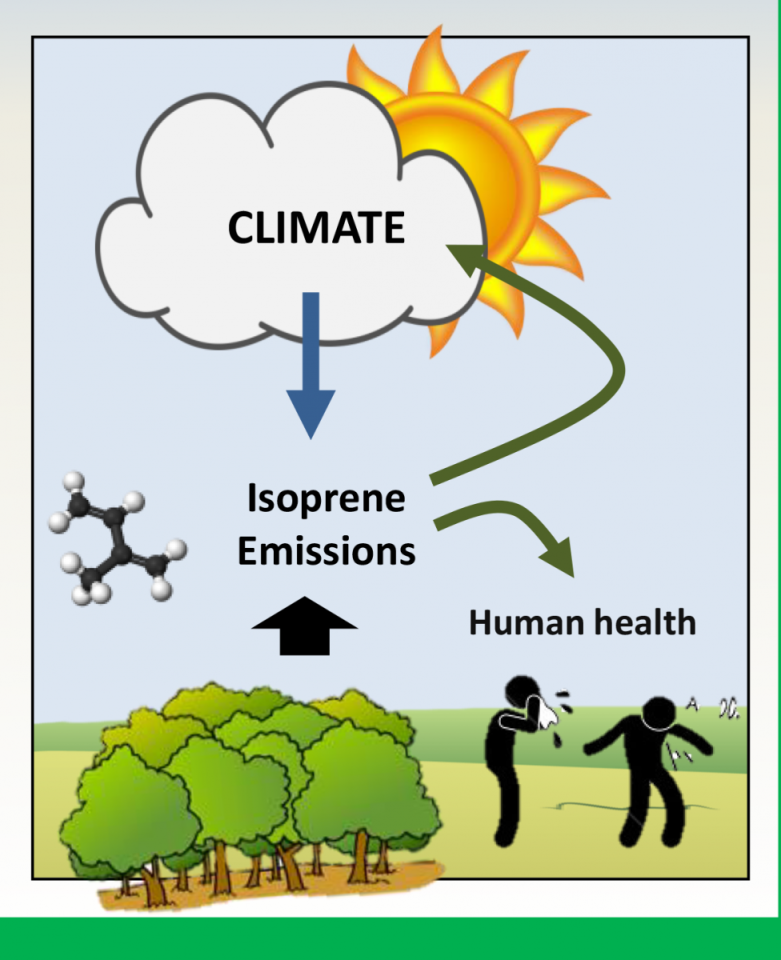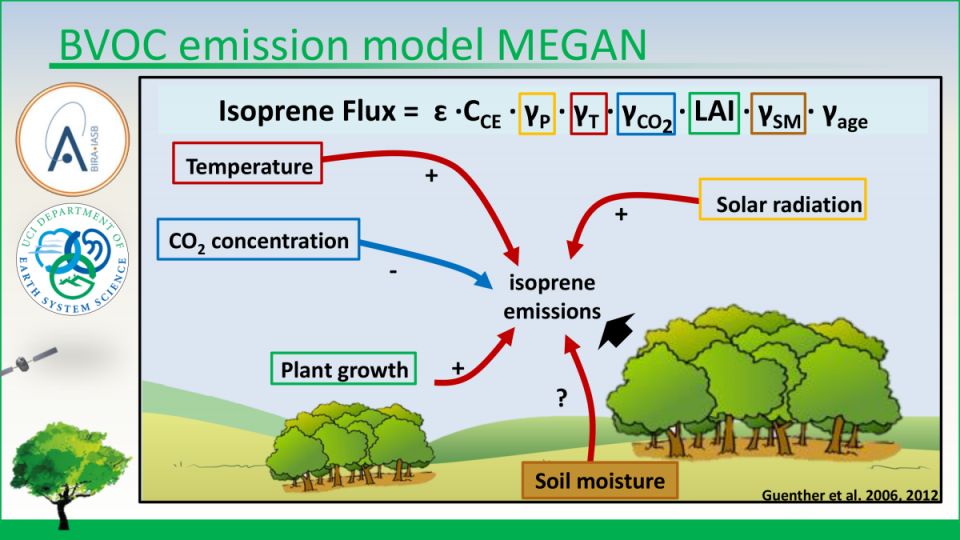Context and objectives
The overall objective of the ALBERI project is to narrow down the uncertainties in biogenic isoprene emission estimates, especially regarding its response to land cover changes and droughts. The main research hypothesis of ALBERI is that spaceborne formaldehyde (HCHO, a high-yield product of isoprene oxidation), solar-induced fluorescence (SIF) and soil moisture can be used to improve the response of the MEGAN isoprene emission estimates to drought.
- To incorporate annual, satellite-based vegetation maps to replace modelled land covers in biogenic mission models
- To improve the satellite-based root-zone soil moisture datasets to replace reanalysis data used in the drought parameterization algorithm.
- To establish an empirical relationship between remotely-sensed SIF, HCHO and satellite-based soil moisture.
Project outcome
Scientific results
We found that land cover changes reduce the positive global isoprene emission trends. This is mainly due to tree cover losses in the Tropics. In some areas, however, land cover changes outweigh the emissions trends due to the warming climate, which is the main driver of isoprene trends. The GLEAM root-zone soil moisture was improved after the assimilation of the surface soil moisture data from the SMAP satellite. Besides, an alternative to a fully process-based model was developed based on deep-learning methods, and validated against in situ measurements. Nonetheless, this work also highlighted the limitations of the current drought algorithm solely based on soil properties, likely related to the high uncertainty in soil properties such as porosity. Since soil moisture may not be the best quantitative drought indicator, we explored empirical relationships relying on satellite-based HCHO, GLEAM soil moisture, SIF and temperature. This was challenging since the OMI spatiotemporal scale seems insufficient for detecting droughts. A linear regression model using TROPOMI HCHO columns, maximal temperatures and GLEAM root-zone soil moisture led to marginal improvements that remained inconclusive regarding the effect of drought. The international partner of ALBERI proposed a new empirical drought stress that could rely on any drought indicator that will further be investigated.
Societal (including environmental) relevance
A better estimation of isoprene will improve the assessment of the oxidizing potential of the troposphere, air quality and climate.
Products and services
We developed the first bottom-up inventory of isoprene emissions which accounts for satellite-based vegetation maps accounting for the fine resolution (30 m) tree cover from the Global Forest Watch database. Global publicly available dataset of surface and root-zone soil moisture with assimilated SMAP soil moisture data from GLEAM v3.5 was made publicly available and an alternate, hybrid model for simulating soil moisture was developed using deep learning and the GLEAM mode that will be made available in the coming months.
Potential users
This work is intended to researchers studying tropospheric chemistry, air quality and climate. Potential users of GLEAM involve both researchers worldwide studying global and local hydrology, but also agricultural agents and local governments requiring high-resolution data of ecosystem water use.
Outreach
How do trees affect the Earth’s atmosphere in dry environments?
Comment les arbres affectent-ils l'atmosphère terrestre en cas de sécheresse?
Hoe beïnvloeden bomen de aardatmosfeer bij droogte?
| Project leader(s): | BIRA - IASB - Royal Belgian Institute for Space Aeronomy | |||
| Belgian partner(s) |
|
|||
| Location: |
Global |
|||
| Related presentations: | ||||
| Website: | https://alberi.aeronomie.be/ | |||


